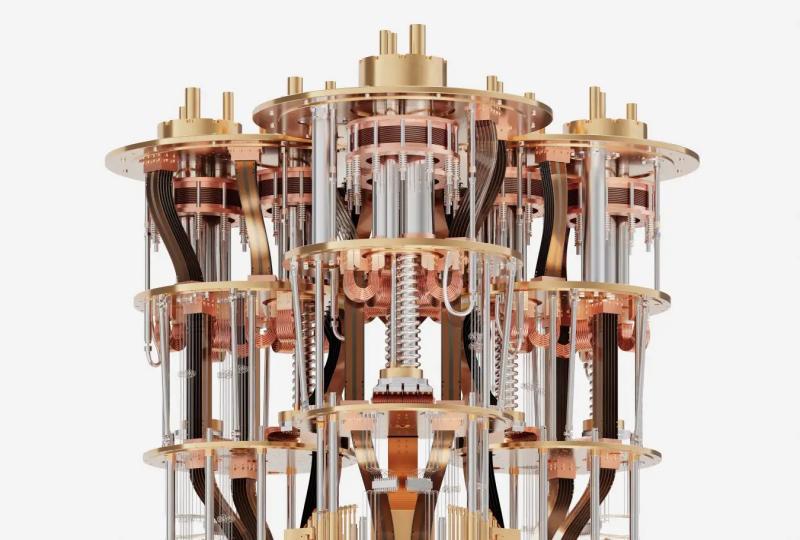Want to Build Quantum Computers? Start Here!
2025.03.09 · Blog build quantum computers
Quantum computing is one of the most exciting frontiers in modern technology. The potential to revolutionize industries such as cryptography, artificial intelligence, and material science hinges on the development of practical quantum computers. But how exactly do we build these complex machines?
In this article, we break down the process, focusing on key aspects such as the types of qubits, the hardware components, and the software required to create a quantum computer.
What Is a Quantum Computer?
A quantum computer is fundamentally different from classical computers. It relies on qubits—quantum bits—that can exist in multiple states simultaneously, thanks to the principles of superposition and entanglement. This allows quantum computers to perform certain calculations much faster than classical computers.
To build a quantum computer, it’s essential to understand the basic quantum principles that govern the behavior of qubits, including quantum mechanics, interference, and entanglement. These principles allow quantum computers to solve problems that would take classical computers millions of years to compute.
Key Components of a Quantum Computer
Building a quantum computer requires both hardware and software that can support quantum operations. Below are the key components involved in building a quantum computer:
1. Qubits:
The building blocks of quantum computing, qubits are quantum systems (such as atoms, ions, or superconducting circuits) that can represent both 0 and 1 at the same time due to superposition. There are several types of qubits used in quantum computers:
Superconducting Qubits: These are one of the most common types, using circuits made of superconducting materials to store quantum information.
Trapped Ions: In this approach, individual ions are trapped and manipulated with lasers to perform quantum operations.
Topological Qubits: A more advanced and less explored form of qubits, these rely on braiding particles to create stable quantum states.
Photonic Qubits: These use properties of photons to encode and manipulate quantum information.
2. Quantum Gates:
Quantum gates are the operations applied to qubits to perform calculations. Unlike classical gates, quantum gates are reversible and can manipulate qubits through interference, superposition, and entanglement.
Quantum Circuit: The quantum circuit connects the quantum gates and qubits, enabling the execution of quantum algorithms. The design of a quantum circuit is critical to ensuring that the quantum computer performs desired operations correctly.
Quantum Error Correction: Quantum computers are prone to errors due to qubit decoherence and other quantum noise. Quantum error correction techniques, such as surface codes and concatenated codes, are essential to ensure the stability of quantum computations over time.
Hardware Requirements for Building Quantum Computers
Building the hardware for a quantum computer requires precision and advanced technology. The physical environment needed to operate quantum systems is highly controlled, typically requiring:
Cryogenic Systems: Superconducting qubits and many other types of qubits need to operate at temperatures near absolute zero. Cryogenic systems, such as dilution refrigerators, are used to cool down the quantum computer to these extremely low temperatures.
Vacuum Chambers: Trapped-ion qubits require vacuum environments to prevent interference from air molecules, and these chambers are often used to maintain high levels of isolation and precision.
Laser Systems: For some types of qubits, such as trapped ions, lasers are used to manipulate the state of qubits by applying light pulses.
Microwave and Radio Frequency Equipment: These are used to control qubits in many systems, especially superconducting qubits, by sending precise signals to interact with the qubits.
Software for Quantum Computers
Once the hardware is in place, quantum computers require software to function. Quantum programming languages and frameworks enable developers to create quantum algorithms and applications. Some of the most commonly used quantum programming tools include:
Qiskit (IBM): An open-source quantum software development kit that provides tools for writing quantum algorithms and running them on quantum computers.
Cirq (Google): A quantum programming framework designed for developing and executing quantum algorithms on quantum hardware, particularly for Google’s quantum processors.
Quipper: A quantum programming language that focuses on high-level programming and optimization of quantum circuits.
Microsoft’s Quantum Development Kit: A set of tools and libraries to program quantum computers using the Q# language.
Challenges in Building Quantum Computers
While the concept of quantum computing is not new, the technology is still in its infancy. Building quantum computers involves overcoming several significant challenges:
Quantum Decoherence: Quantum information can easily be lost due to interactions with the environment, a problem known as decoherence. Developing methods to preserve quantum states long enough for meaningful computations is a key challenge.
Scaling: Increasing the number of qubits while maintaining their stability is a major hurdle. Current quantum computers operate with tens of qubits, but for practical applications, we need machines with thousands or millions of qubits.
Error Correction: Due to the fragile nature of quantum systems, error rates are high, and quantum error correction is required to ensure reliable computation. However, this also requires more qubits, making it a resource-intensive problem.
The Future of Building Quantum Computers
Despite these challenges, progress is being made at an extraordinary pace. Tech giants like IBM, Google, and Microsoft are investing heavily in building scalable quantum computers. Startups and research institutions around the world are also contributing to the advancement of quantum hardware, making quantum computing more accessible than ever before.
The future of quantum computing holds immense promise. As hardware improves and error correction techniques evolve, quantum computers will begin to solve problems that were previously considered intractable for classical computers. Building a quantum computer may still be a complex and resource-intensive process, but the rewards are vast, and we are closer than ever to unlocking the full potential of quantum computing.
Conclusion
Building quantum computers involves sophisticated hardware, specialized qubits, and advanced software. Though there are many challenges, the rapid development of quantum technology promises to transform computing and unlock new possibilities across industries. Whether you’re a researcher, developer, or enthusiast, understanding how quantum computers are built is the first step toward becoming a part of this revolutionary field.
Featured Content






